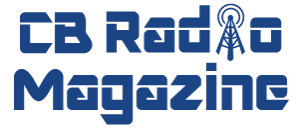Ranger PPR-TLM1 CB Radio Review
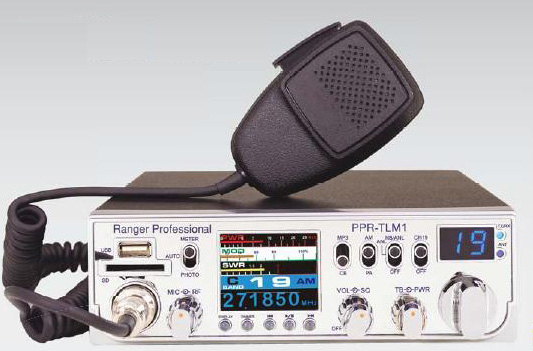
When people ask me what’s the newest thing in the CB radio market I usually tell them about a new radio that has blue leds, or a company that is now including talkback on their line. It wasn’t until this last year that CB radio went through a new technology boom with the introduction of Bluetooth radios from both Ranger and Cobra. But Ranger USA has kicked it up another notch and the result is a radio with more features than you can shake a stick at: the Ranger Professional PPR-TLM1. We’ve been lucky enough to get our hands on one of these and let me tell you, you’re in for one heck of a review.
I’ll do my best to describe all the features and options but I think the pictures and video for this review will do more than anything to really highlight what this radio can do.
Please Note: This review is for the second generation model – the previous version had slightly different software and options.
OPENING THE BOX
When looking at the box you’ll get the feeling right away that this isn’t your average-looking radio. The picture on the box of the frequency display screen is just plain cool and as soon as you unwrap the unit it’s tough to take your eyes off that large TFT screen in the middle of the radio – (Thin Film Transistor Display).
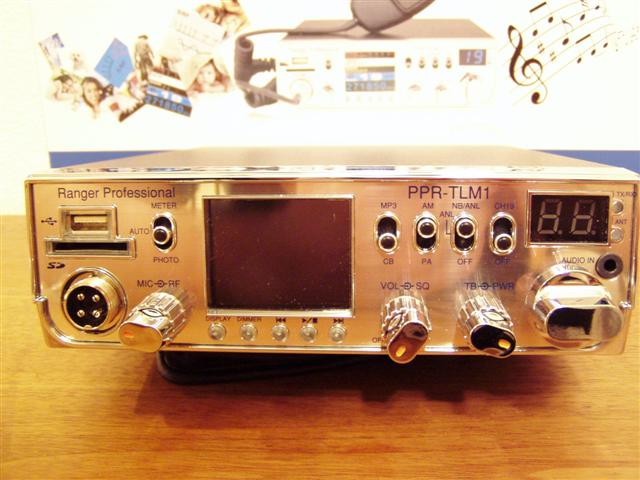
The radio is a good size (around the size of a Cobra 29) and has fairly standard covers and styling just about everywhere except the faceplate. You’ll immediately notice some new slots and buttons you’ve never seen on a CB radio.
The radio comes with a standard 3 pin power cord and a 4 pin stock microphone (it’s actually Ranger’s SRA-158). You’ll also find the mounting bracket and hardware packaged inside the box and as you unwrap them keep an eye out for the small USB stick wrapped in plastic (you’re going to need it later!).
FEATURES
This radio has some of the coolest features I’ve seen on a CB radio and so I’m going to break the features into two sections – one section to explain the new technology and a second section explaining the more traditional CB features.
Let’s talk about the cool stuff first.
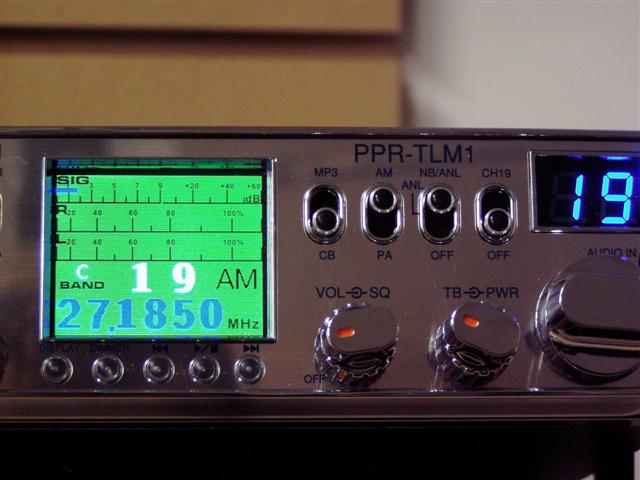
2 inch TFT Display
It’s safe to say that you’ve haven’t seen anything like this on a CB radio before. The TFT display is a thin screen placed centrally in the face of the radio. This screen has the ability to display different meters in digital format. You can have a multi-function display showing your frequency and receiving signal and then when you key up it can switch to a different display showing modulation or RF output. The software in the radio allows multiple options and so you can choose how you’d like the information to be displayed.
Not only are the meter display options easy to read, but having the ability to pick your meter is just downright cool – and that isn’t where it stops either.
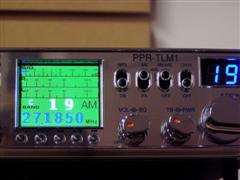
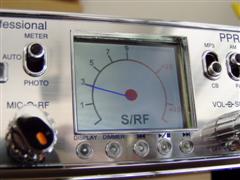


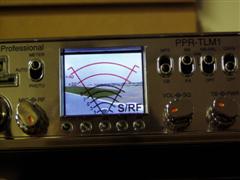
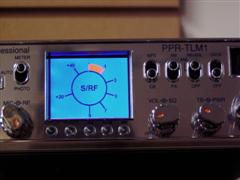
The display and software also allow you to customize the background of the meters. Yes, you can actually superimpose your image of choice to display behind the meter itself. So whether you intend to put Miss July back there to keep you company, or for the family-minded driver maybe a picture of the wife or kids, you can totally customize the meter you see on the screen. And not to sound like a TV commercial – “But wait…there’s more”.
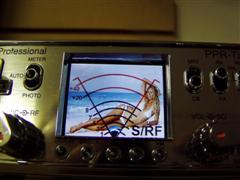
The screen can also act as a photo album, basically displaying whatever photos you wish in a rotating sequence. You can choose multiple photos (I’m talking lots of pictures here) and they will display on the screen for a few seconds and then scroll to the next photo or you can have it stop on one photo only. The radio has two modes for this feature. One mode which is a PHOTO mode in which it shows the pictures no matter whether you’re talking to someone or listening. And a second mode – AUTO mode, where it will display the meter when the squelch is broken or if you key up the radio, otherwise it will scroll through the photos.

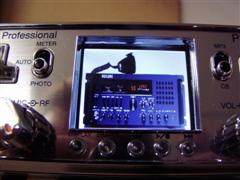

To add or change photos Ranger has supplied you with a USB Flash card which plugs into the USB port on the radio. If you wanted you to use an SD card there is also an SD card slot on the radio for the same purpose. The radio pulls the photos from the memory on the USB Flash card and will display them on the screen so it’s necessary for the USB card to be plugged into the radio to show the picture, but the included USB card is very small and doesn’t stick out very far once plugged in.
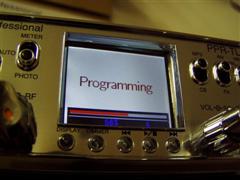
When you want to add new photos or change the meter display options you just plug the USB Flash card into your computer. There is a special program from Ranger on the card that helps you to convert pictures to the right size for the radio and it also lets you customize the meter displays (adding background pictures to show up behind the meter). It takes a couple of minutes to familiarize yourself with the program and while there is a slight learning curve involved when figuring out how to customize the meters, I think most people shouldn’t have problems getting the hang of it. Instructions for how to use the software are located HERE. When you go to update the radio there is a process for re-programming the display and it takes about 3-4 minutes to complete.
MP3 Player
This CB radio has the ability to play MP3’s and initially I wasn’t sure if this feature would be something I would use, but after having the radio in my vehicle I was very pleasantly surprised.
You can pick any MP3 format songs you like and load them onto the attached USB Flash card (you have to put them in the MP3 folder on the card) and then plug in the USB card to the radio. With a flip of the MP3/CB switch to the MP3 position the radio will switch modes and you’re ready to begin listening to music. The buttons just below the TFT screen control moving forward or backwards through the tracks and there is a Play/Stop button as well. The Screen will show you which song you are on in a numbered sequence (example: song 2 of 20).

Now I think Ranger must a have used a higher-quality speaker in this radio because the volume and sound quality of the MP3’s are better than what you normally hear for a CB. It’s not going to be as loud as your actual car stereo, but it definitely is loud enough to listen comfortably to the music and the bonus is that because you’re using the USB memory you can load way more songs than you’d normally fit on a CD for your car stereo.
Additionally, the radio also features an AUDIO IN jack so you could potentially plug in a Ipod or other MP3 player and listen to it through the CB radio.
If the CB speaker isn’t loud enough the radio also features right and left audio output jacks on the back so you could plug in two external speakers and have stereo surround sound. We tested out this system using SRA-166C speakers and with the external speakers the MP3 player really comes alive offering loud stereo audio.
In my video review of the radio I actually have some footage of the radio playing music through the internal speaker so you can get an idea of the volume and quality.
Beyond the neat technological advances the radio definitely doesn’t lack for any of the standard CB features
Variable Output Power
Variable Talkback
Microphone Gain
RF Gain
Volume
Squelch
PA
ANL (Automatic Noise Limiting) & NB/ANL
Channel 19 Switch
TX/RX Indicator LED
Antenna (High SWR) Warning LED
Auto Calibrating SWR Meter (which is displayed on the TFT display)
Dimmer
The radio makes use of dual control pots, so you’ll have the Volume and Squelch together on one knob and the Mic Gain and RF gain together on another, which is fairly standard practice these days to save room on the face plate.

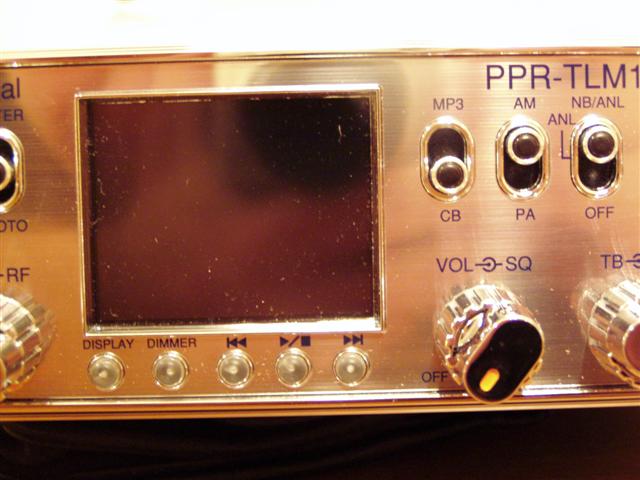


POWERING UP AND ON THE ROAD
While I love new technology on a radio I still expect it to perform the basic duty as a CB radio so I installed this radio in the mobile and got a day to day feel on how it performs.
Once I got the radio installed in the vehicle and powered up I tested out the ease of use and display visibility. The channel-changing knob is easy to use and the controls are all very similar to what we’re used to on other radios. I did notice when changing channels on occasion it might skip a channel here or there as it uses the electronic rotary channel control system like what you find on the Magnum line. The channel display has blue LED’s and is easy to read from across the vehicle.
The TFT display actually makes the meter much more useful than the typical small meter in most radios. I like some of the larger choices that show the S meter zoomed up so you can easily tell the strength of the incoming signal.
The microphone plug is on the face and so mounting wasn’t an issue and the screw-on design is just like most other radios and offers a solid connection.
RECEIVE
The receiver is quite good in the radio and should offer sensitivity and quality similar to other AM CB radios in the Ranger line. Signals came in loud and clear and the NB and ANL/NB did an adequate job of limiting my engine noise in the receiver.
I didn’t get a chance to test it out for receiving DX signals (since we haven’t had much in my area for quite a while) but I did get a chance to listen to some locals talking in a town 30+ miles away while on the road and had no problems understanding them.
TRANSMIT
The radio is a CB radio so it uses a single final transistor and with no modifications and a minor tune you should be able to key 4 watts and swing to 14 with modulation. The variable power does allow you to adjust the dead key of this radio anywhere from 0 watts up to 4 watts. From a 1 watt deadkey the radio should swing about 5 watts (this is with a stock radio only adjusted for modulation).
Output and swing are smooth in delivery and I found I had no problems talking to my base station during testing, putting a S3 on my base from 10 miles away in the mobile.
AUDIO
The radio comes with a SRA-158 stock microphone and that is a plus as it’s one of my favorite microphones and I run it on my other mobile rig (also a Ranger radio by coincidence).
The modulation out of the box for the radio is okay but I definitely felt it could use a little more kick to it so I opened up the radio and adjusted the AMC pot to yield 100% modulation on the meter. It made a good improvement and the modulation on this radio is solid. If you crank the AMC all the way and have the mic gain at maximum you’ll be loud, but it can start to get just a little crunchy when maxed out, so for best results turn it up and then back it down just a bit (listen to the actual on the air audio of this radio here).
I did try lowering the dead key to see if there would be any big drop-off in audio response and the radio continued to deliver good audio from the lower setting which will be a nice feature for many drivers who choose to run additional equipment in-line.
OVERALL
After two weeks of using this radio I can say that the new features definitely add a unique and fun experience to using a CB radio. I found the large meters very useful and more visible than anything I’ve used previously. The receive and transmit met my expectations and the modulation was great.
I think the only complaint I could find was that the variable talkback isn’t quite as variable as I’d like, as most of the adjust occurs toward the far right when turning the knob, but that’s pretty minor and it’s really all I could think of for issues. I think with this type of display you might need to be a little more careful not to scratch it with anything, but I don’t think the couple of scratches it might get with normal use will cause any problems in reading the display.
Now I’m sure that this radio isn’t going to appeal to everyone – especially those technophobes out there. If you’re the type of person who runs your Johnson Messenger 223 and doesn’t like radios with bright blue LED’s you probably won’t be interested in this model. But with the amount of people out there using computers, cell phones, and Ipods, I think this radio is going to spark the interest of quite a few drivers and CB hobbyists.
